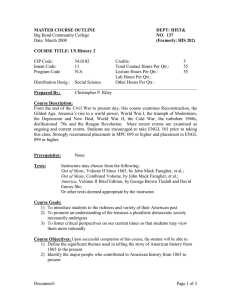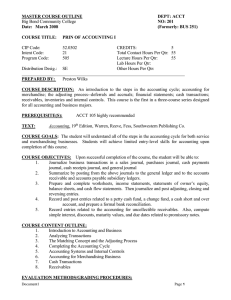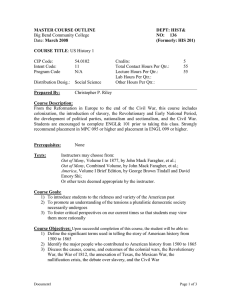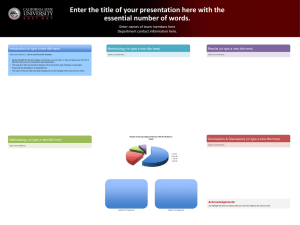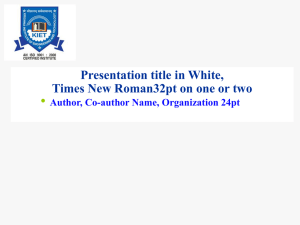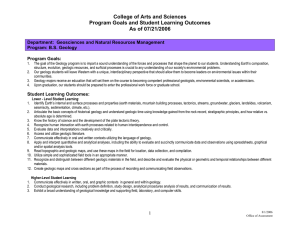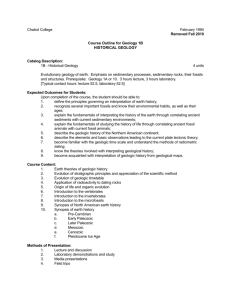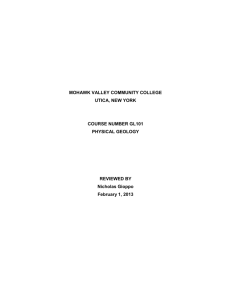GEOL& 101 - Big Bend Community College
advertisement
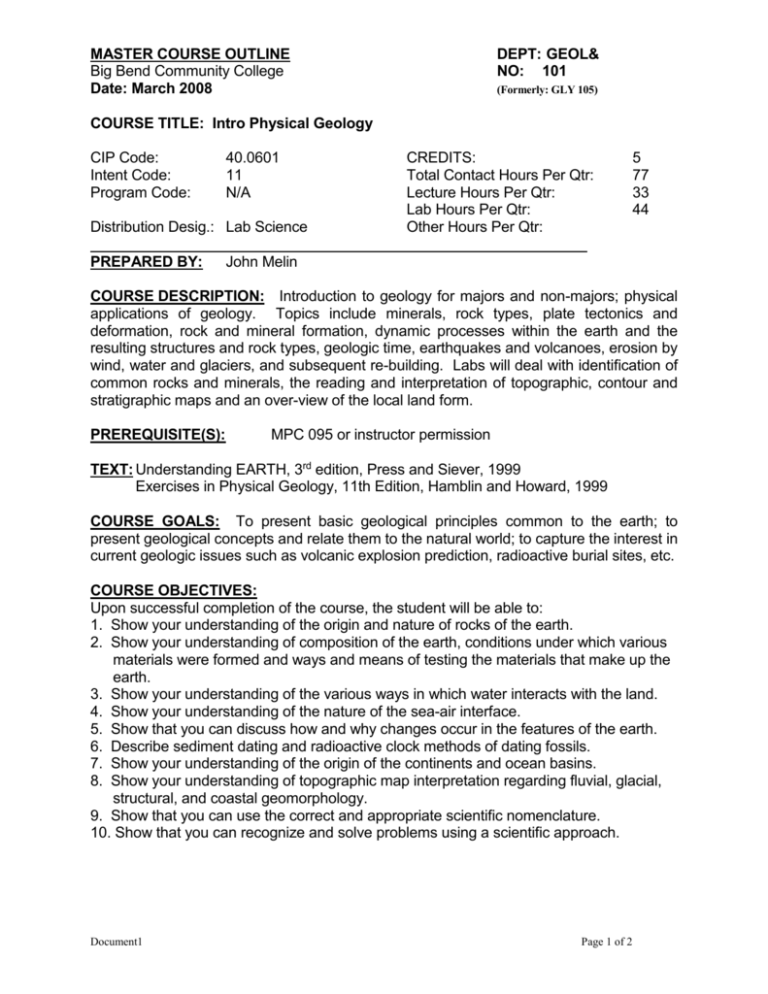
MASTER COURSE OUTLINE Big Bend Community College Date: March 2008 DEPT: GEOL& NO: 101 (Formerly: GLY 105) COURSE TITLE: Intro Physical Geology CIP Code: Intent Code: Program Code: 40.0601 11 N/A Distribution Desig.: Lab Science PREPARED BY: CREDITS: Total Contact Hours Per Qtr: Lecture Hours Per Qtr: Lab Hours Per Qtr: Other Hours Per Qtr: 5 77 33 44 John Melin COURSE DESCRIPTION: Introduction to geology for majors and non-majors; physical applications of geology. Topics include minerals, rock types, plate tectonics and deformation, rock and mineral formation, dynamic processes within the earth and the resulting structures and rock types, geologic time, earthquakes and volcanoes, erosion by wind, water and glaciers, and subsequent re-building. Labs will deal with identification of common rocks and minerals, the reading and interpretation of topographic, contour and stratigraphic maps and an over-view of the local land form. PREREQUISITE(S): MPC 095 or instructor permission TEXT: Understanding EARTH, 3rd edition, Press and Siever, 1999 Exercises in Physical Geology, 11th Edition, Hamblin and Howard, 1999 COURSE GOALS: To present basic geological principles common to the earth; to present geological concepts and relate them to the natural world; to capture the interest in current geologic issues such as volcanic explosion prediction, radioactive burial sites, etc. COURSE OBJECTIVES: Upon successful completion of the course, the student will be able to: 1. Show your understanding of the origin and nature of rocks of the earth. 2. Show your understanding of composition of the earth, conditions under which various materials were formed and ways and means of testing the materials that make up the earth. 3. Show your understanding of the various ways in which water interacts with the land. 4. Show your understanding of the nature of the sea-air interface. 5. Show that you can discuss how and why changes occur in the features of the earth. 6. Describe sediment dating and radioactive clock methods of dating fossils. 7. Show your understanding of the origin of the continents and ocean basins. 8. Show your understanding of topographic map interpretation regarding fluvial, glacial, structural, and coastal geomorphology. 9. Show that you can use the correct and appropriate scientific nomenclature. 10. Show that you can recognize and solve problems using a scientific approach. Document1 Page 1 of 2 COURSE CONTENT OUTLINE: See attached EVALUATION METHODS/GRADING PROCEDURES: PLANNED TEACHING METHODS/LEARNING STRATEGIES: X Lecture X Laboratory _ Supervised Clinical _ Small Group Discussion X Audiovisual _ Individualized Instruction Special Project Other (List) Division Chair Approval Document1 Page 2 of 2
